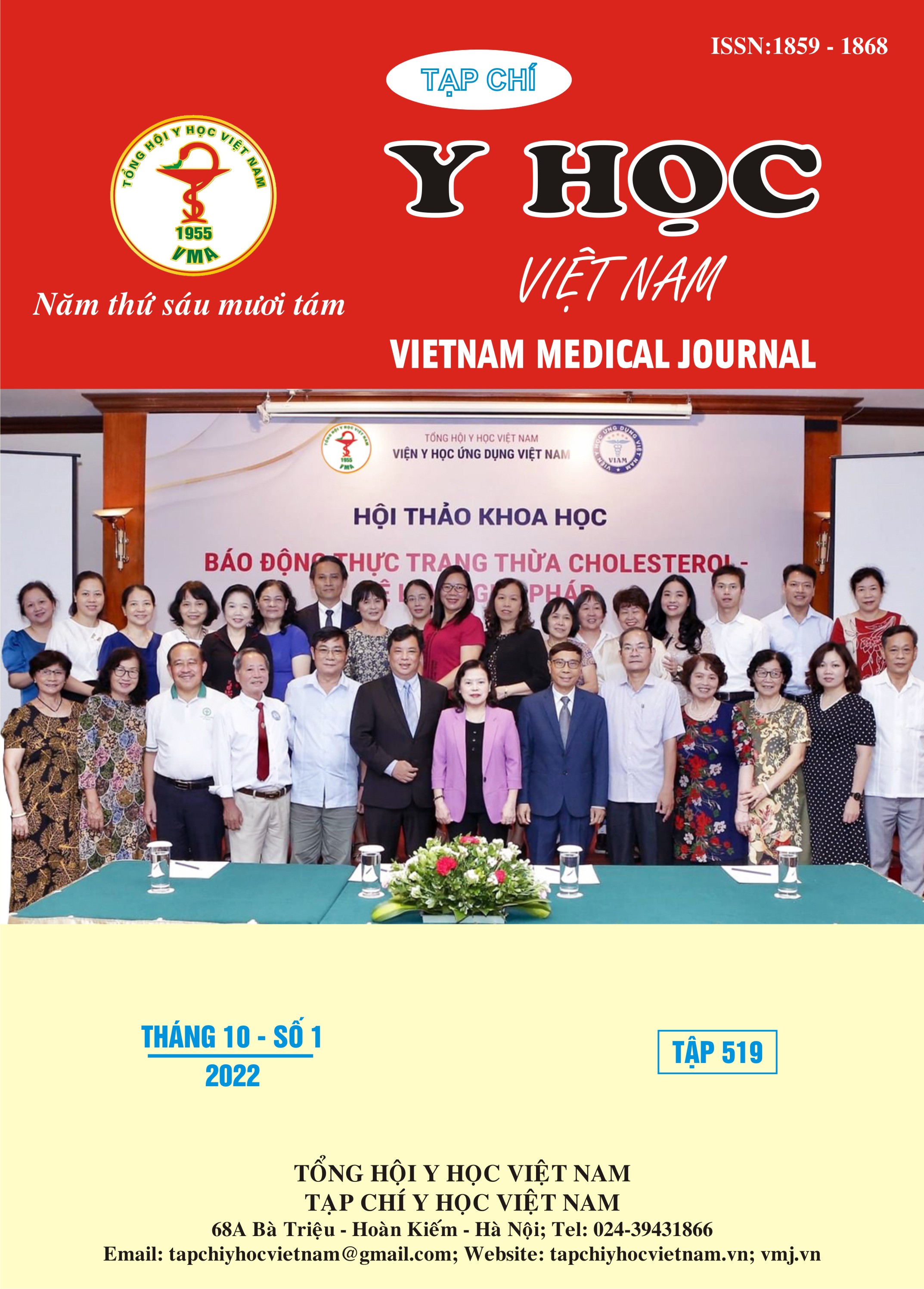PRELIMINARY RESULTS OF APPLYING ENHANCED-IMAGE GENERATING SOFTWARE IN UPPER GASTROINTESTINAL ENDOSCOPY
Main Article Content
Abstract
Introduction: Image-enhanced endoscopy (IEE) plays a vital role in detecting and evaluating endoscopic lesions. However, these techniques are only implemented in advanced, high-cost endoscopic systems. In Vietnam, there have been preliminary results in the application of artificial intelligence (AI) in endoscopy. Objective: To evaluate the feasibility of utilizing AI to simulate enhanced mode images for esophageal endoscopic images. Methods: We built an evaluation set of 240 endoscopic images at the Z-line: 60 FICE images, 60 FICE-simulation images, 60 LCI images, and 60 LCI-simulation images. The FICE and LCI simulation images were generated from the white light images using the CycleGAN network. Each subset of images had 30 normal Z-line images and 30 images with reflux injury. The evaluation set was then shuffled and sent to five junior endoscopists (<5 years of experience) and five senior endoscopists (≥5 years of experience) for evaluation. The doctors were informed that there were simulated images generated by an AI algorithm in the image set and were asked to determine which images were IEE or AI-simulated images. Results: Compared to the senior doctors’ group, the junior doctors’ group assessed that image evaluation was more difficult (52.1% of images were considered hard to evaluate compared to 25.8% in the expert group). The rates of accurate evaluation in the junior group and the expert group were 54.7% and 52.7%, respectively. Ihe level of accurate evaluation between junior and senior doctors was similar. Conclusion: The preliminary results suggested the possibility of applying this software in clinical practice to improve lesions detection in medical units with limited resources.
Article Details
Keywords
Upper gastrointesinal endosocpy, image-enhanced endoscopy, artificial intelligence
References
2. Chadwick G., Groene O., Hoare J. và cộng sự. (2014). A population-based, retrospective, cohort study of esophageal cancer missed at endoscopy. Endoscopy, 46(7), 553–560.
3. Đào Việt Hằng, Lâm Ngọc Hoa, và Vũ Thanh Hải (2020). Đánh giá thực trạng và khảo sát nhu cầu xây dựng cơ sở dữ liệu hình ảnh kết quả nội soi tiêu hóa tại các cơ sở y tế Việt Nam. Tạp chí Y học thực hành, 1126(2), 25–8.
4. Lee W. (2021). Application of Current Image-Enhanced Endoscopy in Gastric Diseases. Clin Endosc, 54(4), 477–487.
5. Goodfellow I.J., Pouget-Abadie J., Mirza M. và cộng sự. (2014). Generative Adversarial Networks. , accessed: 12/09/2022.
6. Li Y., Fan J., Ai D. và cộng sự. (2020). A General Endoscopic Image Enhancement Method Based on Pre-trained Generative Adversarial Networks. IEEE Computer Society, 2403–2408.
7. Zhu J.-Y., Park T., Isola P. và cộng sự. (2020). Unpaired Image-to-Image Translation using Cycle-Consistent Adversarial Networks. , accessed: 12/09/2022.
8. Yoon D., Kong H.-J., Kim B.S. và cộng sự. (2022). Colonoscopic image synthesis with generative adversarial network for enhanced detection of sessile serrated lesions using convolutional neural network. Sci Rep, 12(1), 261.


